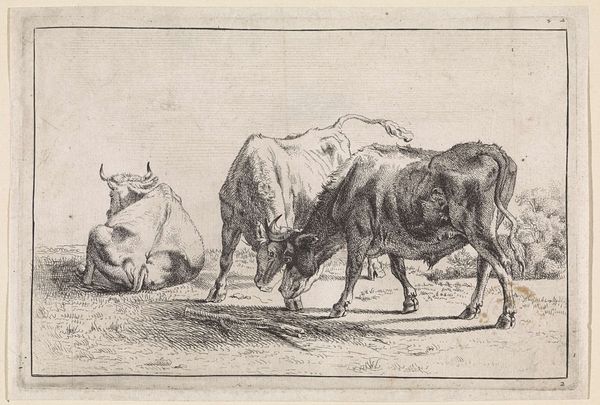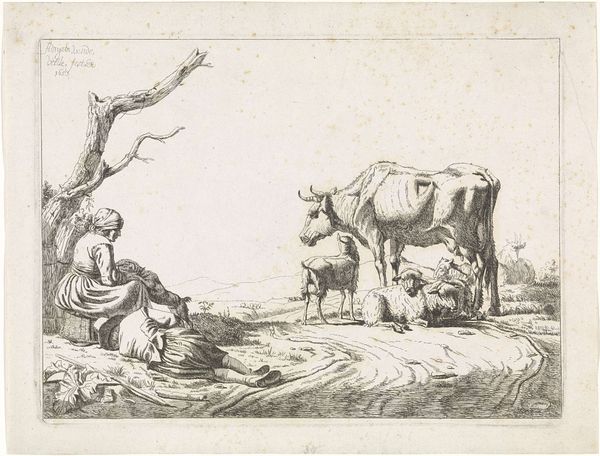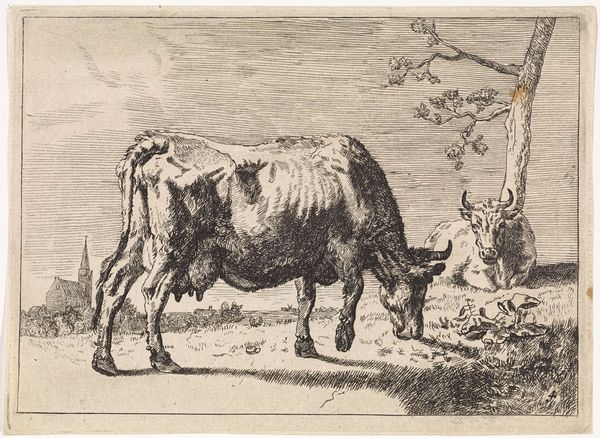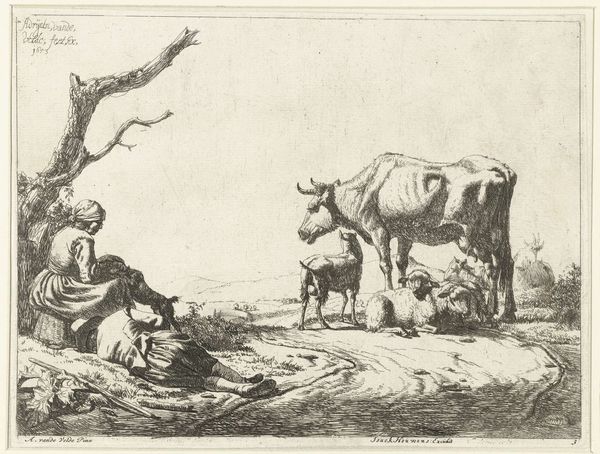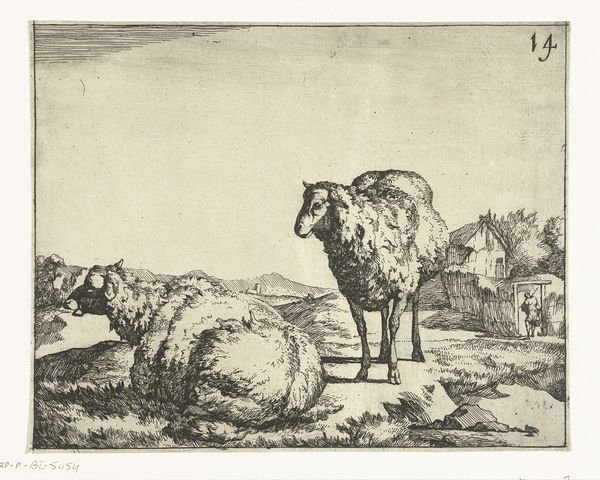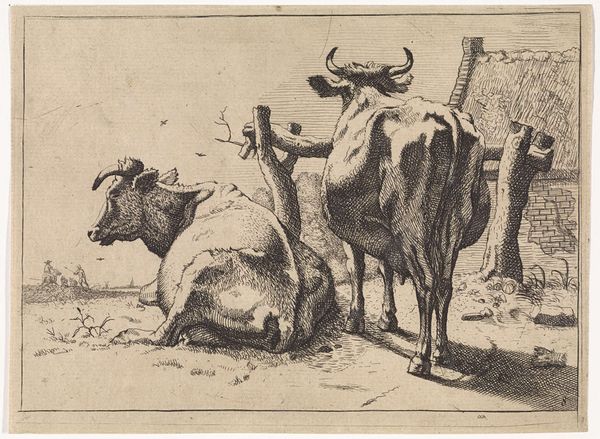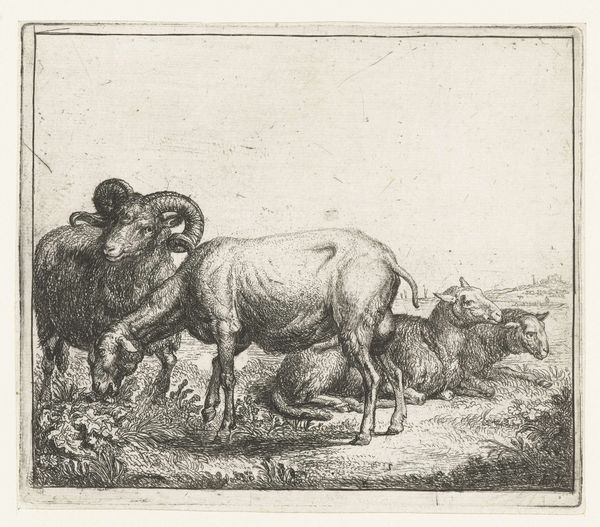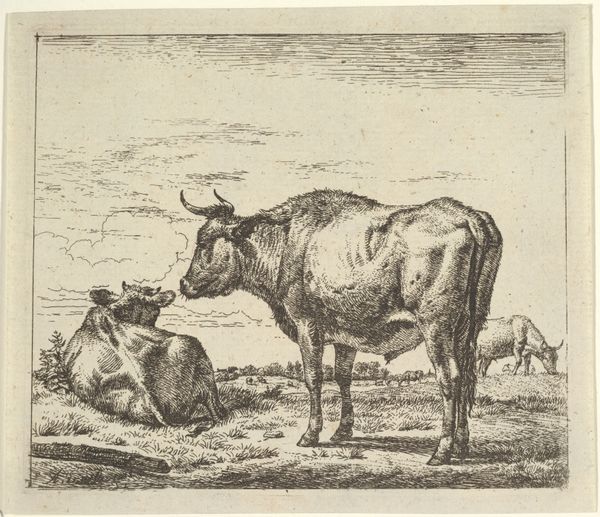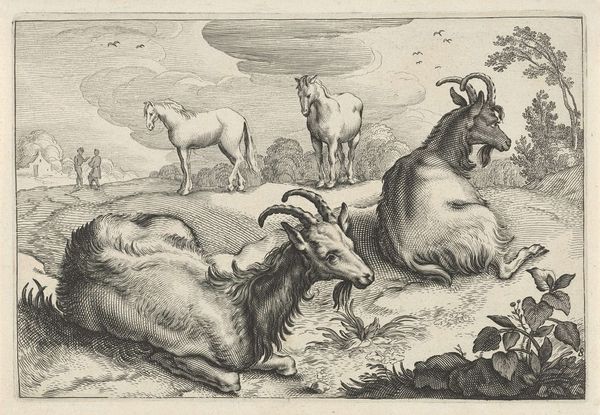
print, engraving
#
dutch-golden-age
# print
#
landscape
#
charcoal drawing
#
figuration
#
pencil drawing
#
engraving
#
realism
Dimensions: height 144 mm, width 215 mm
Copyright: Rijks Museum: Open Domain
Editor: This is an engraving entitled "Twee koeien van achteren gezien," or "Two Cows Seen from Behind," dating sometime between 1635 and 1704. It's currently held at the Rijksmuseum. There’s something strangely compelling about seeing these cows from this particular angle... It's very unassuming and mundane. What stands out to you? Curator: It is interesting how you read it as mundane. I see something radical in the very ordinary presentation of the rural livestock and landscape during the Dutch Golden Age. Doesn't this work challenge the then-dominant patriarchal norms within artistic representation? It centers subjects traditionally relegated to the margins—livestock, rural life—granting them artistic validity. Does that disrupt your idea of the "mundane"? Editor: I hadn't considered the patriarchal aspect... I suppose I was looking at it from a modern point of view. So you see this work as making a statement, by simply showing us… cows? Curator: Exactly! It is an important statement about the cultural and economic power derived from farming and husbandry. Think about land ownership at the time: who held it and how that informed social and artistic hierarchies. Also consider: how might depictions like this reinforce or resist emerging capitalist systems? Is it celebratory, critical, or something else entirely? Editor: I suppose it is quite revolutionary when framed like that, placing farm animals at center stage and almost ignoring the landowner's status. Is it suggesting they should give up that land, redistribute the wealth? Or simply showing what makes it possible? Curator: It presents a visual narrative interwoven with class dynamics, perhaps encouraging the viewer to rethink those power structures. Consider the ethical implications too - what do these natural depictions tell us about the status of nature under growing urbanization, commodification of the landscape, and increased interest in animals in early modern Europe? Editor: This is eye-opening; it's not "just cows" at all. It’s about economics and class, isn’t it? It gives the common person working these lands some visual power. Thanks, I learned a lot. Curator: Indeed. It serves as a reminder of art’s capacity to subtly engage with pressing social issues by giving representation to those traditionally unrepresented, fostering crucial conversations around power and agency.
Comments
No comments
Be the first to comment and join the conversation on the ultimate creative platform.
